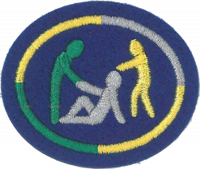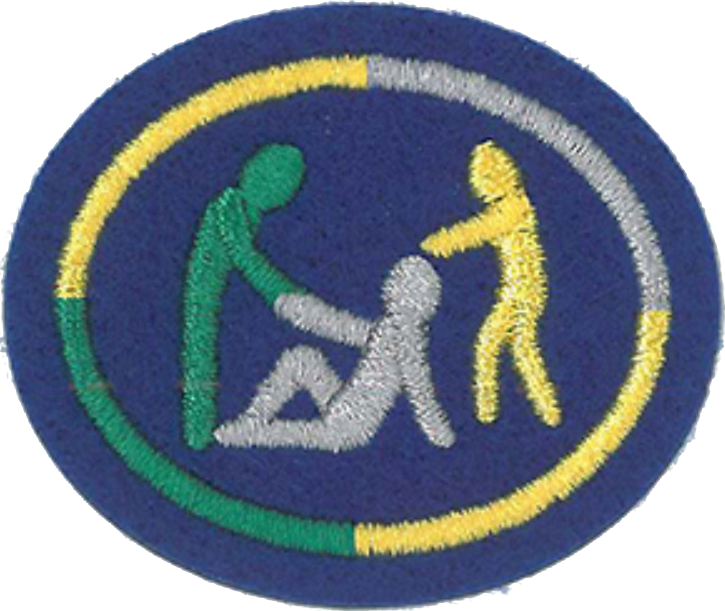AY Honors/Bully Prevention II/Answer Key
Skill Level
2
Year
2018
Version
20.12.2025
Approval authority
North American Division
Prologue
Note: Bully Prevention I and II were written without one being the prerequisite of the other so that the instructor could choose the honor(s) to teach that are most relevant to the group and group dynamics.
1
1a
1b
1c
1d
2
3
4
4a
Refers to damage relationships between friends that destroy status in groups to hurt or upset someone. Over and over again some children in a social setting:
- Get deliberately left out of get-togethers, parties, trips or groups
- Have others ignore them, not wanting to be their friend anymore, or not wanting them around in their group
- Have nasty lies, rumors or stories told about them
(National Institute of Health - nih.gov)
4b
This is when someone tries to upset and harm a person using electronic means (eg, mobile phones, text messages, instant messaging, blogs, websites [eg, Facebook, YouTube] or emails; or have their private email, instant mail or text messages forwarded to someone else or have them posted where others can see them; or have rumors spread about them online; or get threatening or aggressive emails, instant messages or text messages; or have embarrassing pictures posted online without their permission (National Institute of Health - nih.gov)
Types of Cyberbullying
- Prohibiting: This tactic used the art of alienation, where information is made known about a special group to a particular person, or the target, and then intentionally barring that person from the group, as a form of exclusion.
- Deception: This tactic involves befriending an individual for the purpose of acquiring information that can be used against them by forwarding it to others.
- Denigration: This tactic involves attacking an individual’s character by deliberately sending messages or posting false information or rumors about the person for the purpose of inflicting damage to the person's reputation or their relationships with their peers.
- Cyberstalking: Since we use our message devices on a consistent basis, undesirable messages are something that we do not want on a regular basis. This tactic uses repetitive messaging tools to send painful, malicious and/or false information or threatening messages for the purposes of bullying without face to face contact.
- Flaming: This is a common tactic where fights between individuals are conducted online by via e-mail, text messaging, or some form of social media using strong, harsh and ill-mannered language.
- Impersonation: This tactic is among the more serious violations, which involves acquiring some form of access to a person’s email or social media account, and then using it to send derogatory or humiliating material to others under that person’s identity.
4c
Sexual bullying involves the usage of hurtful and demeaning acts that target an individual sexually. This may involve sexually oriented name calling, comments, gestures, and unwelcome touching.
Some examples:
- making sexual jokes, comments, or gestures to or about someone
- using various online or face to face methods to spread unwelcomed rumors
- writing sexual messages about people in public areas
- showing inappropriate sexual pictures or videos to someone of themselves or another person
- posting sexual comments online of videos or pictures on social networks
- the act of touching, grabbing, or pinching someone in a deliberately sexual way
5
5a
This is an open question designed for self-reflection.
Basically, flirting is a welcomed action from the individuals involved. The attention experienced while flirting serves more of appreciated attention. Harassment is attention that is unwanted or unwelcome, especially if asked to stop and it persist.
5b
- Have their private email, instant mail or text messages forwarded to someone else or have them posted where others can see them
- Have rumors spread about them online
- Get threatening or aggressive emails, instant messages or text messages
- Have embarrassing pictures posted online without their permission
(National Institute of Health - nih.gov)
6
6a
Be strong and of good courage, do not fear nor be afraid of them; for the Lord your God, He is the One who goes with you. He will not leave you nor forsake you.”
6b
There is one who speaks like the piercings of a sword, but the tongue of the wise promotes health.
6c
My brethren, let not many of you become teachers, knowing that we shall receive a stricter judgment. For we all stumble in many things. If anyone does not stumble in word, he is a perfect man, able also to bridle the whole body. Indeed, we put bits in horses’ mouths that they may obey us, and we turn their whole body. Look also at ships: although they are so large and are driven by fierce winds, they are turned by a very small rudder wherever the pilot desires. Even so the tongue is a little member and boasts great things. See how great a forest a little fire kindles! And the tongue is a fire, a world of iniquity. The tongue is so set among our members that it defiles the whole body, and sets on fire the course of nature; and it is set on fire by hell. For every kind of beast and bird, of reptile and creature of the sea, is tamed and has been tamed by mankind. But no man can tame the tongue. It is an unruly evil, full of deadly poison. With it we bless our God and Father, and with it we curse men, who have been made in the similitude of God. Out of the same mouth proceed blessing and cursing. My brethren, these things ought not to be so. Does a spring send forth fresh water and bitter from the same opening?
6d
Let no corrupt word proceed out of your mouth, but what is good for necessary edification, that it may impart grace to the hearers.
6e
And the second, like it, is this: ‘You shall love your neighbor as yourself.’ There is no other commandment greater than these.”
7
7a
7b
7c
8
8a
8b
8c
9
9a
9b
9c
10
10a
10b
10c
10d
11
11a
11b
11c
11d
11e
11f
12


